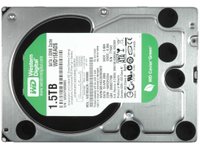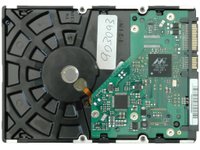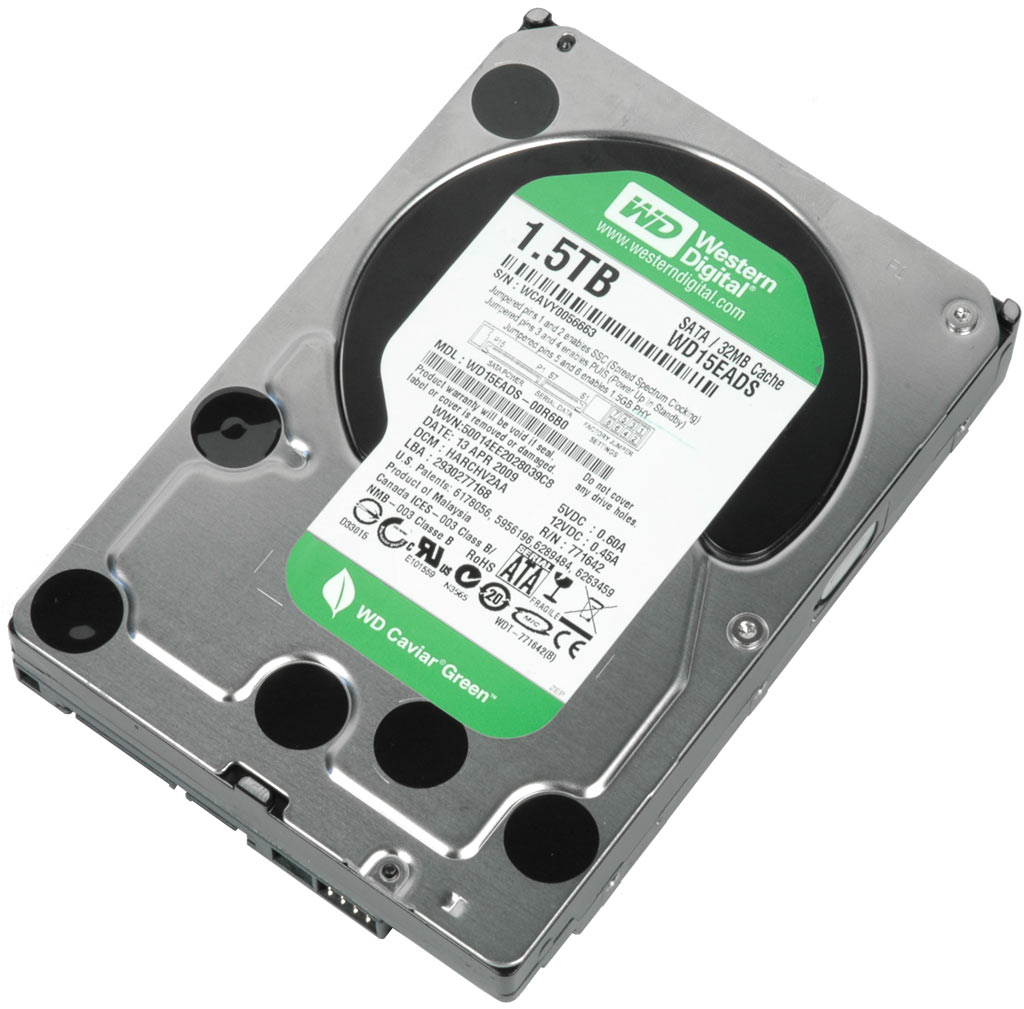1.5 TB Low-Power HDDs: Green Gets Big
Western Digital Caviar Green (WD15EADS)
We took a look at WD’s 2 TB Caviar Green drive when it was released; now it’s time to review the 1.5 TB version, which is technically very similar.
First of all, we’d like to point out that 32 MB cache memory is important in the case of Western Digital’s Caviar Green drives, as only the latest drive generation has been equipped with the increased buffer capacity. Seeing 16 MB cache means that it is a WD EACS-type Caviar Green drive, which does not offer the same power efficiency as the tested WD20EADS (2.0 TB) and WD15EADS (1.5 TB). As you’ll see in the benchmark section, the latest WD generation is much better than the previous one. All drives come with a SATA/300 interface and NCQ (Native Command Queuing).
WD’s product information Web site lists a plethora of marketing-heavy buzz words and technical specs, mostly mentioning low power consumption, reduced operating temperature, noise, and balanced performance. These are supposedly the result of the relatively low 5,400 RPM spindle speed (IntelliPower), dynamic search algorithms to optimize performance and power requirements during seek operations (IntelliSeek), and several other technologies.
A look at our benchmark results shows that the 1.5 TB Caviar Green is a nice performer: its 101.7 MB/s maximum throughput isn’t enough to beat Samsung’s EcoGreen F2 (at almost 107 MB/s), but the result is still respectable. However, WD manages to deliver much better average and minimum throughput numbers, as the Caviar Green stays above 70 MB/s, while Samsung’s EC F2 drops to roughly 50 MB/s, which is quite a difference. WD also dominates the I/O-intensive benchmarks and most of the PCMark Vantage HDD test sections.
Power consumption is a real issue for many users. In this test, the 1.5 TB WD drive is superior in idle power, but not when it comes to our three activity tests: streaming, I/O, and video playback. Yet WD’s drive is quieter in both tests.


Get Tom's Hardware's best news and in-depth reviews, straight to your inbox.
Current page: Western Digital Caviar Green (WD15EADS)
Prev Page Big Green: 1,500 MB Storage Mammoths Next Page Samsung Spinpoint F2 EcoGreen (HD154UI)